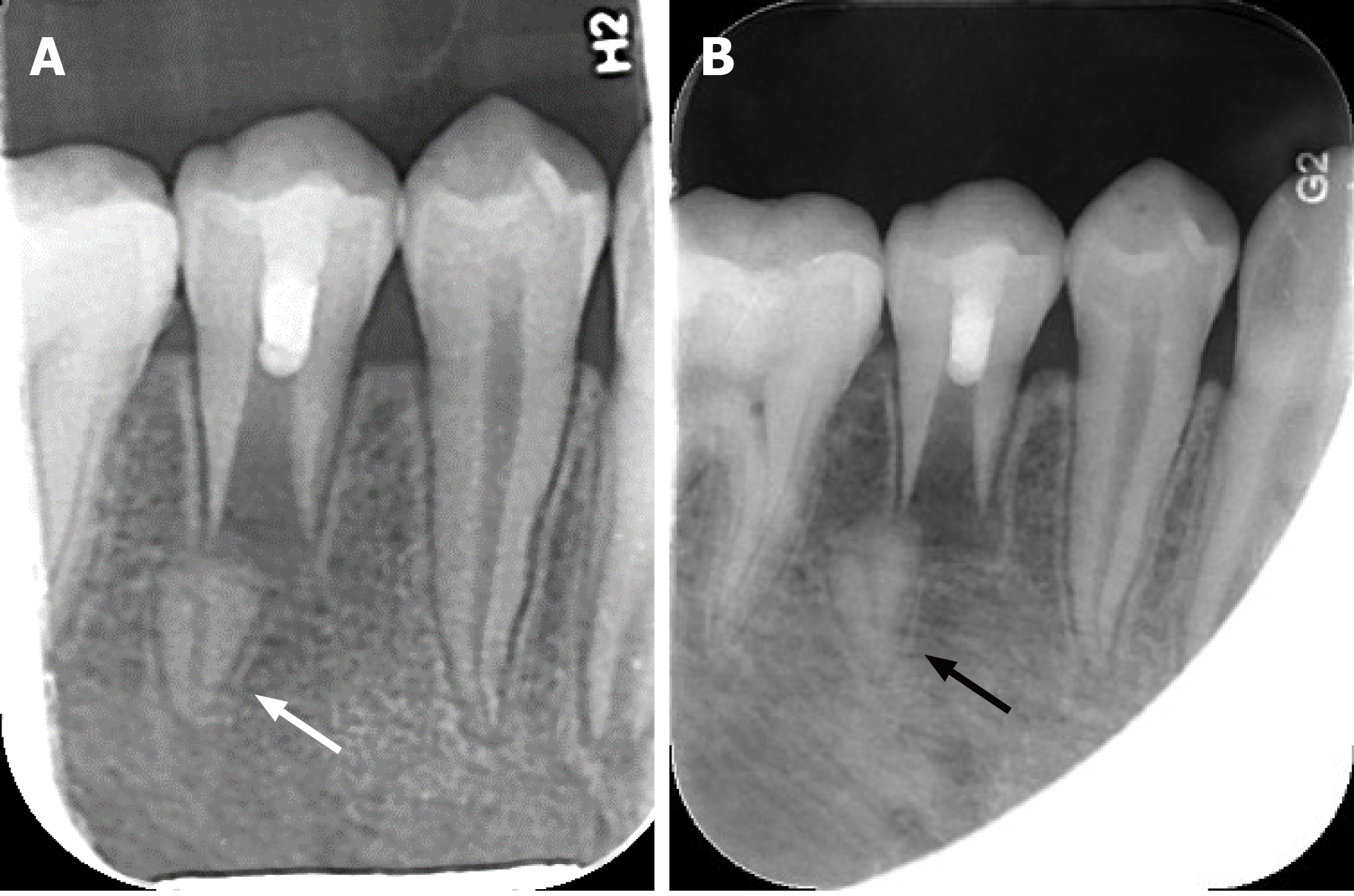Copyright
©The Author(s) 2021.
World J Clin Cases. Apr 26, 2021; 9(12): 2944-2950
Published online Apr 26, 2021. doi: 10.12998/wjcc.v9.i12.2944
Published online Apr 26, 2021. doi: 10.12998/wjcc.v9.i12.2944
Figure 1 Preoperative clinical and radiographic evaluation.
A: Overview of mandibular dentition shows a gingival sinus (white arrow) on the buccal side of tooth # 45. The right column is a local enlarged image of the orange dotted area with the white circle showing the fractured tubercle of dens evaginatus on the occlusal surface of tooth # 45; B: Panoramic radiograph at the initial visit showing that the root of tooth # 45 was fractured and separated. The separated root apex was almost completely formed, and the main root remained immature with thin root walls associated with a large radiolucency (black arrow).
Figure 2 Clinical evaluation at the 2 wk follow-up and periapical radiograph after revascularization.
A: Clinical evaluation at the 2 wk follow-up showing that the fistula was completely resolved (subsided); B: Periapical radiograph after revascularization showing iRoot Bp Plus was placed below the cementoenamel junction.
Figure 3 Periapical radiograph during the follow-up period.
A: Periapical radiograph at the 3 mo follow-up demonstrated complete resolution of the radiolucency and a drifting root tip (white arrow); B: Periapical radiograph at the 1 yr follow-up showed that the separated root tip (black arrow) was more distally drifted than before. The root length and dentin thickness of the main root did not increase.
- Citation: Wu ZF, Lu LJ, Zheng HY, Tu Y, Shi Y, Zhou ZH, Fang LX, Fu BP. Separated root tip formation associated with a fractured tubercle of dens evaginatus: A case report. World J Clin Cases 2021; 9(12): 2944-2950
- URL: https://www.wjgnet.com/2307-8960/full/v9/i12/2944.htm
- DOI: https://dx.doi.org/10.12998/wjcc.v9.i12.2944















